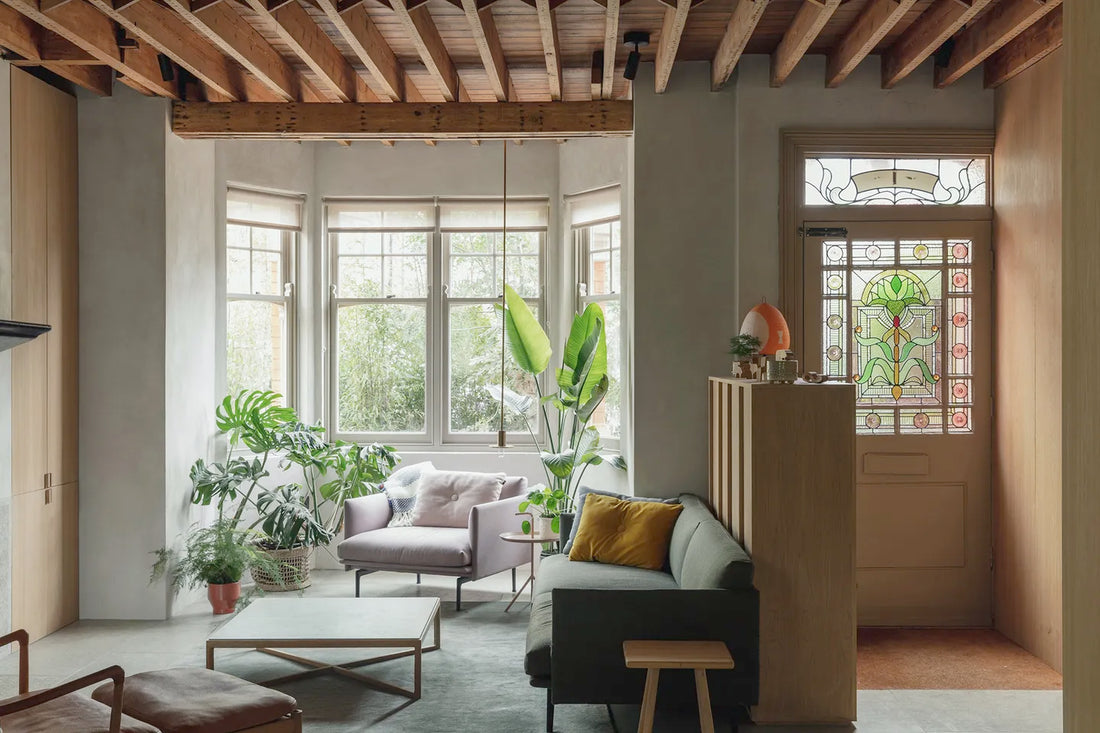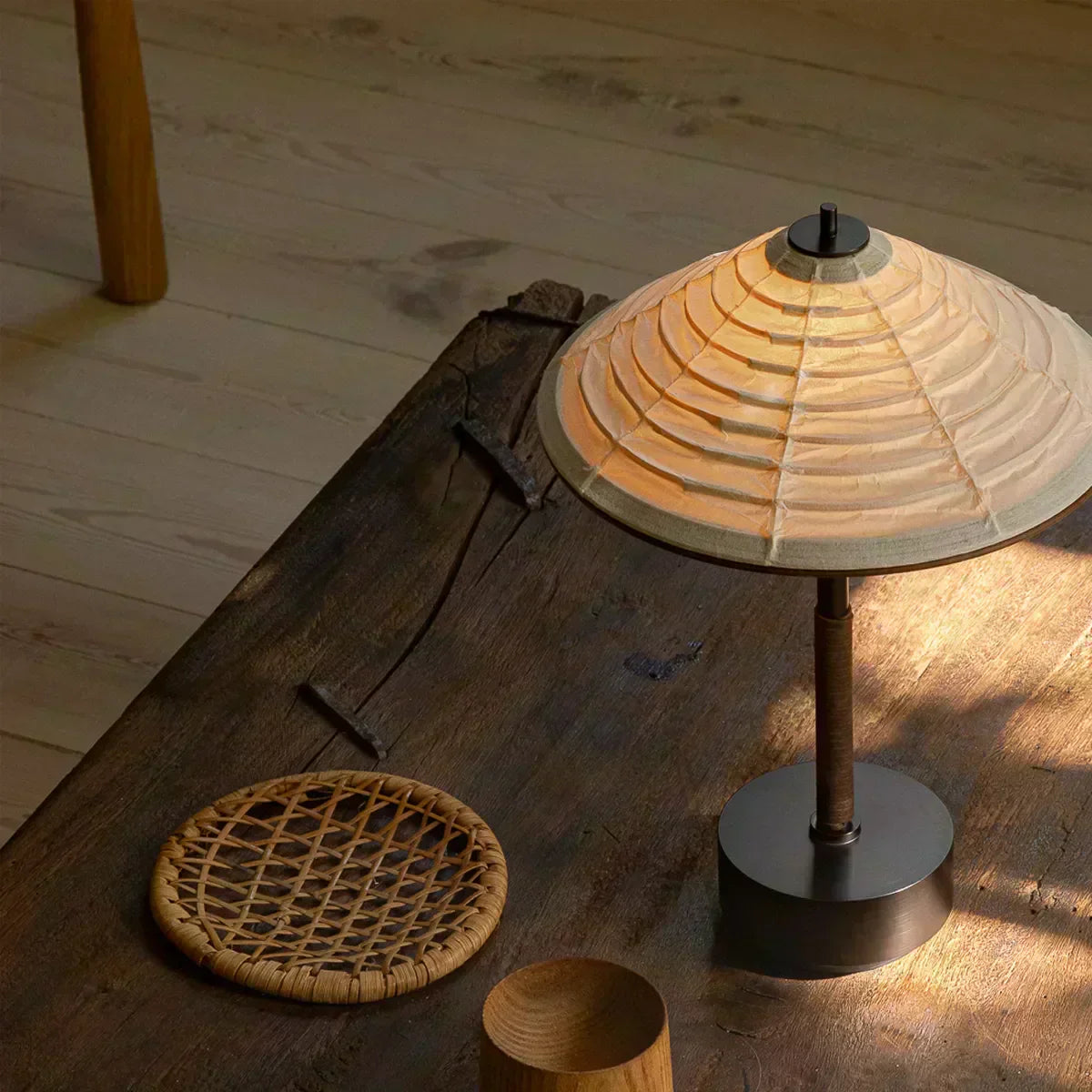
9 min read
Designing for Net-Zero: A Conversation with Architect Ben Ridley
WLLW spoke with London-based architect Ben Ridley about how the Passivhaus design approach and low-energy innovations are shaping the next generation of healthy, sustainable homes.
WORDS Kaye Preston
WLLW sat down with London-based director, architect and certified Passivhaus designer Ben Ridley to discuss his company, Architecture for London, their Low Energy House project in North London and the principles of Passivhaus design. Centered on energy efficiency, thermal comfort, and air quality, the Passivhaus standard serves as a guiding force in Ridley's approach to sustainable design.
By blending traditional architectural aesthetics with groundbreaking, energy-efficient technologies, Ridley offers a model for constructing sustainable homes that are not only beautiful and functional but also a joy to live in.
Your studio emphasizes sustainable design and the creation of healthy homes. Can you describe your ethos further and how you got started in this area of the field?
We improve people’s lives by reimagining the places in which we live and work. Environmental impact is a key consideration in our work. We take a research-based, fabric-first approach to sustainability that carefully considers the embodied energy of materials and the performance of our buildings in use. Ultimately, we want to create net-zero, healthy buildings that are a joy for people to inhabit.
I have always had a keen interest in sustainability in relation to the built environment. This is really important as up to 25 percent of our CO2 emissions come from our buildings. If we are to hit net zero by 2050, we need to address our built environment and our existing homes in particular.
I qualified as a Certified Passivhaus Designer in 2016 and these principles have become a guiding force for my practice’s work.
"Ultimately, we want to create net-zero, healthy buildings that are a joy for people to inhabit."
Ben Ridley
Can you elaborate on how the principles of Passivhaus construction including air quality and thermal comfort along with the use of low VOC and natural materials create a healthier living environment?
The Passivhaus approach results in healthier, more comfortable buildings. It creates homes that have a comfortable, consistent temperature without cold spots near windows or doors. The lack of cold bridges means that condensation and therefore mold growth is eliminated. Mold is a serious health hazard and it is often present in homes with poor thermal performance.
Passivhaus homes are relatively airtight and have their fresh air supplied by highly efficient MVHR systems [Mechanical Ventilation with Heat Recovery (MVHR) systems continuously cycle out stale air and bring in fresh, filtered air, maintaining a comfortable, condensation-free environment year-round]. These pre-heat the fresh incoming air very efficiently, but they also have HEPA filters that significantly reduce levels of diesel particulates, NOx [the harmful environmental gases nitric oxide and nitrogen dioxide, generated when fuel is burned] and pollen in the home.
We select natural, low embodied energy materials wherever possible and these also tend to avoid the VOC (Volatile Organic Compounds) issues that may come with modern, highly processed materials and paints. For this reason, we use timber, natural stone, clay, and lime plaster and try to minimize steel, concrete and painted finishes.

Low Energy House by Architecture for London. Photo courtesy of Lorenzo Zandri
The Low Energy House blends Edwardian details with modern, energy-efficient elements. How did you approach the challenge of ensuring the house retained some of its original charm while integrating the latest in sustainable design?
The overall aim of the project was for it to be an exemplar for the sustainable refurbishment of a typical terraced home in London, with a constrained budget. Both embodied energy and energy in-use have been considered in depth. People are often surprised by the large open-plan space and the contemporary, minimal interior. The house appears to be quite traditional on the outside, we carefully refurbished the front facade and original Edwardian front door. People usually expect to see a decorative Edwardian hallway when they walk into these kinds of houses, with the space being split up into a series of small rooms rather than one large continuous volume.
The ground floor ceiling was removed, exposing and celebrating the original timber structure of the house while also giving a sense of heightened volume and space.
Exposing these original timber joists was key to retaining a sense of character & charm in the ground floor spaces.
The rear rooms of the house were previously very dark as the rear faces north. It was therefore important to remove most partition walls on the ground floor to create a brighter open-plan living space.
 Low Energy House by Architecture for London. Photo courtesy of Christian Brailey |
 Low Energy House by Architecture for London. Photo courtesy of Christian Brailey |
You've highlighted the use of natural materials such as stone, timber and lime plaster over cement-based products in this house. Can you discuss the environmental advantages and any trade-offs of using these materials?
Natural materials including stone, timber and lime plaster were used throughout rather than cement-based products.
We used lime plaster throughout which has a beautiful finish (meaning no paint was required) and provides a layer of airtightness. The natural limestone in the floors and kitchen is a pleasure to look at every day. The way that sunlight catches it and reveals the ancient fossils is fantastic. The natural materials feel warm and comfortable to the touch which is a real joy.
We also used a timber structure where possible (including an entire loft conversion) and a suspended timber floor in the extension instead of a concrete slab. Masonry nib walls were retained at the ground floor to avoid energy-intensive steel box frames.
How does the integration of the MVHR system in this project contribute to both the energy efficiency and health aspects of the home, especially in the context of air quality challenges?
The MVHR system provides pre-heated fresh air, creating a warm and comfortable home. The system also filters the incoming air, removing pollen, diesel particulates and NOx to create a healthy indoor environment, which is great, as the house is near a busy road.

Low Energy House by Architecture for London. Photo courtesy of Lorenzo Zandri
From your experience merging energy efficiency with the preservation of a home's original character, what insights can you offer those aiming to achieve a similar balance in their own refurbishments?
Retaining the front facade:
Often much of a period property’s character is in its external front facade. This can be retained by insulating the front facade internally instead of externally. Also, consider double or triple-glazed traditional sash window replacements at the front.
An original front door can be retained and improved with draft strips and a draft-proof mailbox. Secondary glazing can be installed behind character stained glass in the door and fanlight.
Airtightness:
A 12mm to 15mm (1/2 inch to 5/8 inch) thick layer of Lime Green Solo plaster, applied by a standard plasterer directly onto the brick walls, creates a naturally airtight layer inside the house. Lime plaster is a traditional material originally used in our period properties and left unfinished, the bare lime walls add texture and depth to the minimalist interiors.
Chimneys:
If the character of the original fireplaces and chimney breasts are being retained, the flues will need to be insulated and made airtight, otherwise, they will be a significant source of heat loss. Vermiculite insulation can be poured in from the top of the chimney. Ventilation may need to be considered to avoid condensation.
Embodied carbon:
Use as little steel and concrete as possible as both are energy intensive. Reuse original timber joists where possible and new beams could be formed from characterful reclaimed timbers instead of steels.
Rather than a polished concrete floor (beloved of architects) we used natural stone tiles for the ground floor and in all the bathrooms, which would have been a familiar building material to Victorian and Edwardian house builders.
Upstairs, the floors are in timber, again a traditional characterful material. We used both oak and - in the master bedroom - Douglas fir.
The simple, minimal palette of natural materials can create a tranquil yet characterful backdrop in any home.
"The most important thing for us is closing the ‘construction gap’. Many sustainable elements are not particularly complex, but they do require careful installation, checking and testing."
Ben Ridley
What are some upcoming innovations in sustainable and healthy design that you're excited about or envision incorporating into future projects?
The most important thing for us is closing the ‘construction gap’. Many sustainable elements are not particularly complex, but they do require careful installation, checking and testing. We’ve recently launched as a building contractor too (AFL Build), this means we are able to provide a turn-key service, with both Passivhaus designers and Passivhaus tradespeople, where the whole team understands the importance of Passivhaus principles and are working toward a common goal.
What does the future hold for Architecture for London?
We’d love to continue creating beautiful, healthy sustainable homes. In addition to our bespoke homes for private clients, we are now applying the same low-energy principles to larger projects, including the development of 11 apartments in north London and a refurbishment of a converted warehouse in Clerkenwell London, creating six low-energy offices for start-up companies.
Where can our readers find out more about your work?
Architecture for London and @architectureforlondon
 Low Energy House by Architecture for London. Photo courtesy of Lorenzo Zandri |
 Low Energy House by Architecture for London. Photo courtesy of Lorenzo Zandri |
 Low Energy House by Architecture for London. Photo courtesy of Lorenzo Zandri |
 Low Energy House by Architecture for London. Photo courtesy of Lorenzo Zandri |
 Low Energy House by Architecture for London. Photo courtesy of Lorenzo Zandri |
 Low Energy House by Architecture for London. Photo courtesy of Architecture for London |
Featured Image: Architecture for London
Photography: Lorenzo Zandri and Christian Brailey


